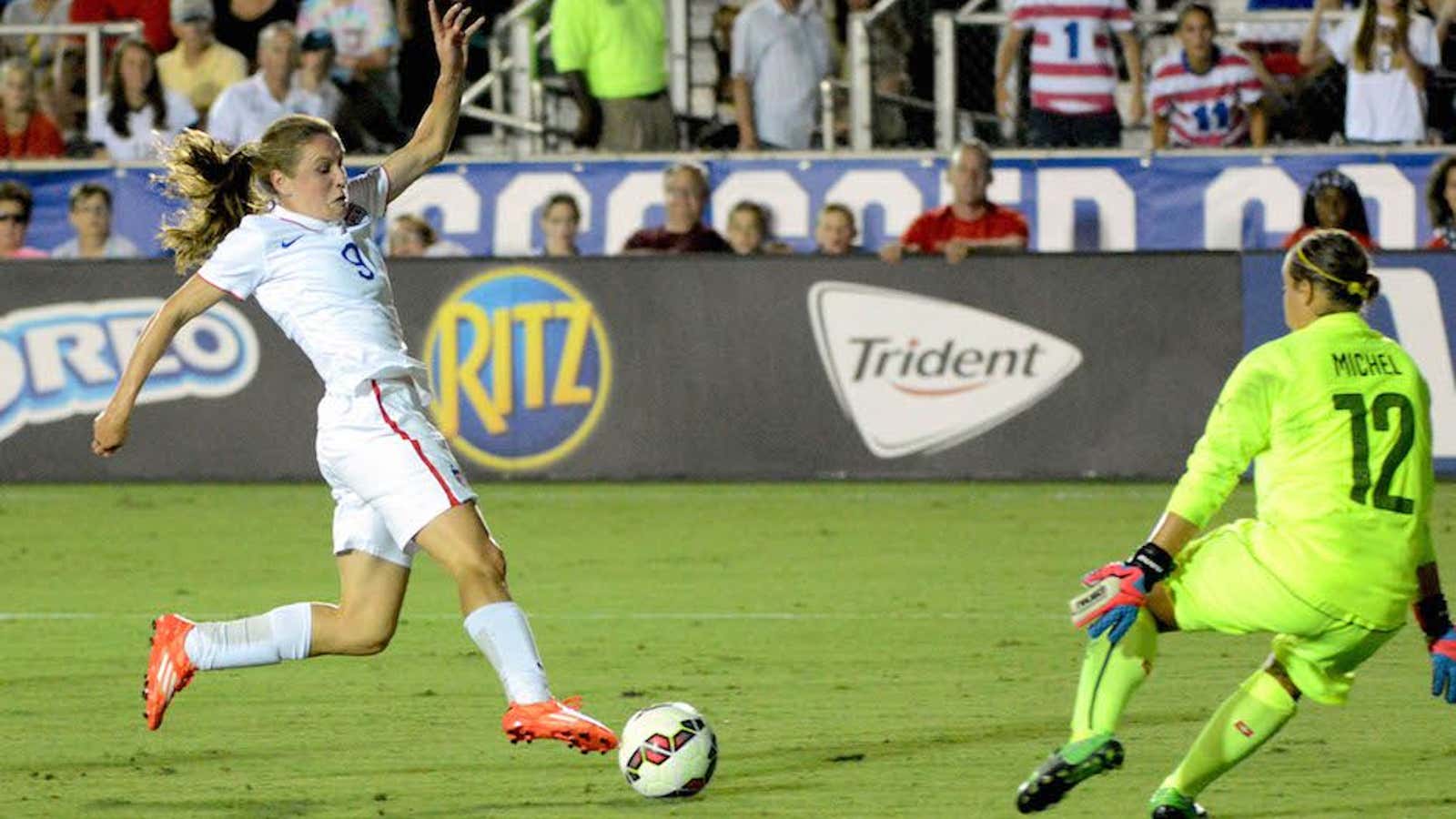It will be eight months until actual play begins, but already the Women’s World Cup in Canada next June has become a battle—ostensibly between natural grass and artificial turf, but really about sexism.
Some of the world’s best women soccer players are arguing that the plan to play the tournament on artificial turf, unlike the natural grass in the men’s World Cup, is gender discrimination. They’re filing a lawsuit (pdf) against the Fédération Internationale de Football Association (FIFA) and the Canadian Soccer Association (CSA).
Artificial turf, which is cheaper because it requires so little upkeep, has been slammed in the soccer world, with athletes saying it’s terrible for the game, and that the hard, rough surface causes injuries. Welsh soccer star Gareth Bale, who plays for the Spanish club Real Madrid, twisted his ankle while playing on an artificial turf field, and later called it the worst pitch he has ever played on.
Every men’s World Cup since 1930, including the 2014 World Cup in Brazil, has been played on grass. The incoming tournaments in Russia and Qatar will feature grass surfaces.
If you’ve played the game yourself, you know the field plays an important role: The ball bounces and rolls around differently on plastic than on grass. The surface temperature of synthetic turf is also significantly hotter than natural turf, which puts athletes at risk of dehydration and overheating.
And because the friction of the plastic turf exposes players to scrapes and burns that aren’t an issue with natural grass, players’ cautiousness can also change the way the game is played—reducing the excitement for viewers. A 2013 survey of top female soccer players found that they were 80% less likely (pdf, page 6) to attempt slide tackles on plastic turf.
A survey of Major League Soccer players found that an overwhelming majority said they felt plastic turf would increase their chances of injury, soreness, and longer recovery times after playing a match. One study (paywall) suggests that playing on artificial turf puts a further strain on your joints and leg muscles than grass does. Another study found the best combination to reduce strain and prevent ACL injuries is natural grass and cleats.
The players’ proposal, that the tournament’s six venues be temporarily equipped with natural grass, is estimated to cost a little more than $3 million dollars—a negligible expense when compared to the estimated $14 billion that FIFA spent on this year’s men’s World Cup.
